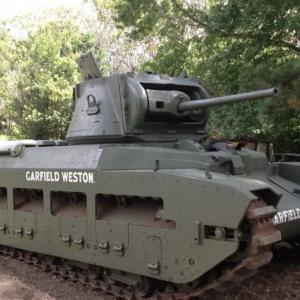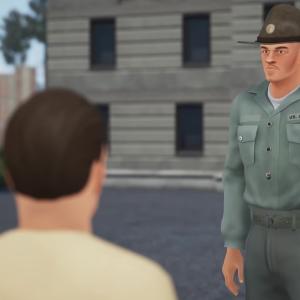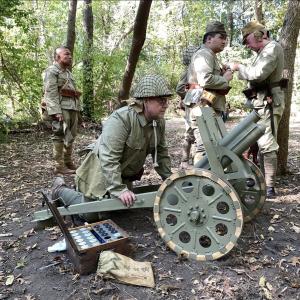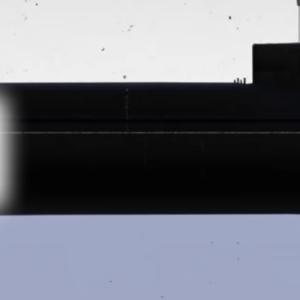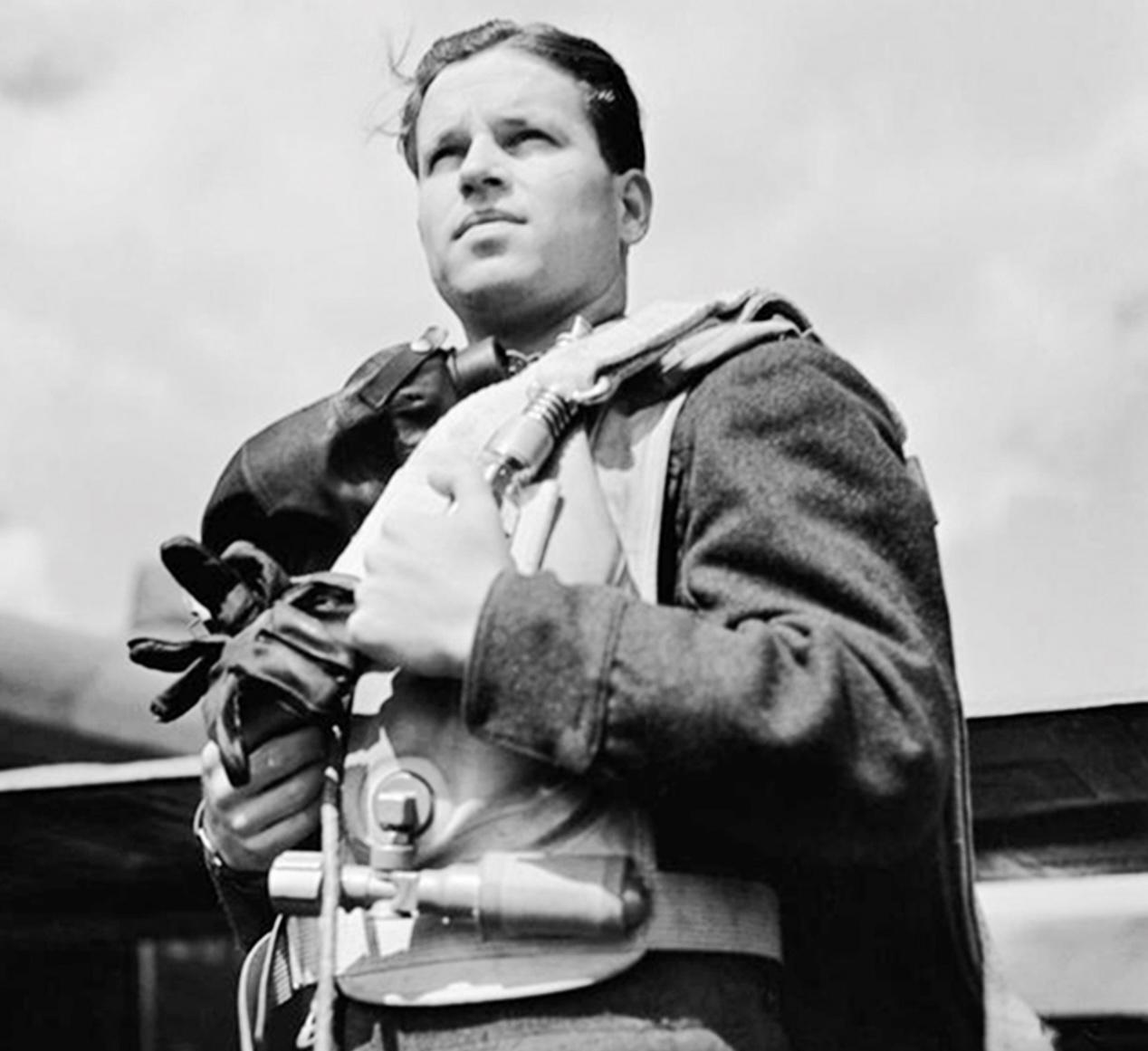
Guy Gibson
Guy Penrose Gibson was born on 12 August 1918 in Simla, British India, where his father, a British colonial officer, was stationed. His early years were spent in India, but when Guy was two years old, the family returned to England. Raised in a strict environment, Gibson was educated at St Edward’s School in Oxford, where he excelled in sports and academics. From a young age, he showed an aptitude for leadership, a quality that would later define his military career. In 1936, at the age of 18, Gibson joined the Royal Air Force (RAF) as an officer cadet, embarking on a career that would take him to the forefront of World War II's aerial combat.
Gibson’s early years in the RAF were spent with No. 83 Squadron, flying the Handley Page Hampden bomber. He quickly demonstrated an exceptional talent for flying and leadership. By 1940, he had gained valuable experience and honed his skills in bombing operations over enemy-occupied Europe. His remarkable flying abilities and bravery were rewarded with his first combat decorations, including the Distinguished Flying Cross (DFC). By the time he was 24 years old, Gibson had completed over 170 operational sorties, a remarkable feat that marked him as one of the RAF’s most accomplished pilots.
In 1943, Gibson’s leadership potential was recognised when he was chosen to form and lead a new squadron—No. 617 Squadron, which would be tasked with one of the most daring and technically challenging missions of the war. The squadron’s purpose was to execute Operation Chastise, a mission designed to destroy critical dams in the Ruhr Valley of Germany, which were supplying hydroelectric power to German industry. The plan involved the use of a revolutionary new weapon—a “bouncing bomb” developed by engineer Barnes Wallis. This weapon was designed to skip along the surface of water, allowing it to bypass underwater defenses and detonate against the dam walls.
The mission would require great courage and precision, as it involved flying at low altitudes under heavy enemy fire. On the night of 16/17 May 1943, Gibson led 19 Lancaster bombers from No. 617 Squadron deep into German territory to attack the Mohne, Eder, and Sorpe dams. Gibson himself flew the lead aircraft, Lancaster ED932 (AJ-G), and attacked the Mohne Dam. His aircraft was hit by flak during the attack, but Gibson’s determination remained unshaken. He completed his bombing run, breaching the dam, before circling back to draw enemy fire, allowing the subsequent aircraft to complete their missions.
Despite the heavy losses, the raid was successful. The breach of the Mohne and Eder dams caused catastrophic flooding, disrupting Germany’s industrial production and severely damaging key infrastructure. The mission was one of the most successful Allied operations of the war, and its success bolstered morale across Britain and the wider Allied forces.
Gibson’s role in the raid earned him the Victoria Cross (VC), the highest military decoration for gallantry in the face of the enemy. The Victoria Cross was awarded to Gibson for his leadership and bravery in leading the attack on the Mohne Dam and his continued courage despite the dangers. He was celebrated as one of the most accomplished and fearless pilots of the war. His leadership in Operation Chastise established him as a war hero, and his story would become an enduring symbol of British resolve and bravery.
Throughout his military career, Gibson was known for his strong bond with his black Labrador dog. The dog was not just a pet but a beloved companion to Gibson, accompanying him frequently during his time at RAF Scampton, where No. 617 Squadron was based. He became a sort of unofficial mascot for the squadron, and many of the men in the squadron grew fond of the dog, who was often seen walking around the base or lying by the hangar.
The dog's presence became particularly meaningful to Gibson, who was known to be a somewhat solitary figure, especially in the tense days leading up to Operation Chastise. The dog was a comfort to him, providing companionship and a sense of normality amid the stresses of war. Tragically, on the night of the Dambusters raid, while Gibson and his men were preparing for the mission, the animal was struck and killed by a car near the base. Gibson was devastated by the loss of his loyal companion. He later requested that the squadron’s ground crew keep the dog’s death a secret from the rest of the men until after the raid, fearing that it would affect their morale.
Gibson's beloved canine companion was buried in a small ceremony at RAF Scampton, with a simple headstone marking his grave. The dog’s passing was a personal tragedy for Gibson, who had become deeply attached to the animal, especially in the context of the pressures of war. The story of his dog remains a poignant part of Gibson’s legacy, symbolising not just the sacrifices of war but also the emotional toll that such experiences took on the men who fought in it. However, the dog’s name, now seen as offensive, has been handled with sensitivity in modern retellings of the story, reflecting a more contemporary understanding of racial terminology while preserving the emotional connection Gibson had with his dog.
After the success of the Dambusters raid, Gibson was briefly removed from operational flying due to the importance of his role as a national hero. He was given a series of public relations and instructional duties, including a trip to the United States to assist in recruiting for the British war effort. However, Gibson found it difficult to stay away from the front lines and lobbied to return to active service.
In September 1944, Gibson was reinstated for operational flying and participated in a bombing mission over the German cities of Rheydt and Mönchengladbach. On 19 September, he flew a de Havilland Mosquito aircraft as part of a mission in which he was acting as a "master bomber," directing the bombing force from above. Tragically, Gibson's aircraft crashed near Steenbergen in the Netherlands, and both he and his navigator, Squadron Leader Jim Warwick, were killed.
The exact cause of the crash remains unclear, with speculation ranging from mechanical failure to enemy action. Gibson was just 26 years old at the time of his death. He was buried in the Roman Catholic cemetery at Steenbergen, a quiet town in the Netherlands, where his grave is maintained by the Commonwealth War Graves Commission. A memorial to Gibson was erected in the town, and "Gibsonstraat" (Gibson Street) was named in his honor.
Guy Gibson’s legacy as a leader, a war hero, and a man of remarkable courage continues to be remembered to this day. His leadership during Operation Chastise, the Dambusters raid, is considered one of the most audacious and successful operations of World War II, and his actions as a pilot and commander are studied in military history as examples of bravery, innovation, and tactical genius.
The story of his dog, though now controversial due to the animal's name, remains an important part of his personal story. It symbolises the emotional bonds formed during the war, even amid the horrors of combat. The loss of his companion was one of the many personal sacrifices Gibson made during the war, and it highlights the human side of a man who became a symbol of wartime leadership.
Gibson’s life and death continue to inspire. The memorials dedicated to him in Steenbergen and RAF Scampton, along with his posthumous recognition through awards and honors, keep his memory alive. His autobiography, Enemy Coast Ahead, provides further insight into his personality and experiences during the war, and his story continues to resonate with those who value the courage and sacrifice of those who fought in the Second World War.
Wing Commander Guy Gibson's story is one of resilience, duty, and sacrifice, a testament to the extraordinary feats achieved by individuals who faced incredible challenges during one of history’s most devastating conflicts.

